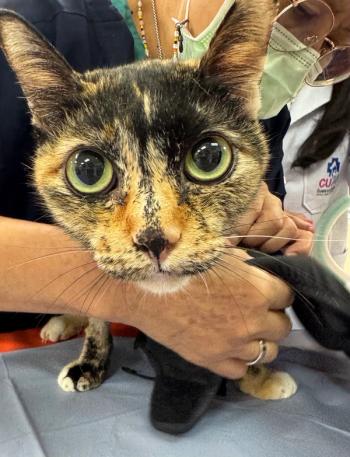
Frequency of Job-Related Injury in Equine Veterinarians
A UK study revealed a high percentage of injuries requiring hospitalization and work leave.
Working with large animals has an inherent risk of personal injury. A study recently conducted in the United Kingdom examined the frequency of job-related injuries experienced by equine veterinarians.
Study Design
The study targeted all UK veterinarians working with horses. Approximately 1700 members of the British Equine Veterinary Association were approached to complete the questionnaire at the 2013 annual conference or via online format.
Questions addressed the respondents’ history of equine veterinary work, as well as the frequency and type of injuries “that required (self) treatment and/or resulted in time off work.” Respondents were also asked to provide details on their worst work-related injuries.
Results
In all, 620 practicing equine veterinarians completed the questionnaire. Fifty-five percent of respondents were female, and the median age and length of time in equine veterinary practice were 37 and 11 years, respectively.
A total of 2292 injuries were reported by 495 veterinarians, and injuries occurred an average of every 3 years and 7 months. The average rate of injury decreased with the amount of time spent in veterinary practice, ranging from 0.8 injuries per year for those in practice for 5 years or less to 0.2 injuries per year after 15 or more years in practice.
RELATED:
- Colic Surgery and Return to Activity in Horses
- Detecting Pain in Horses via Facial Expressions
A large proportion of injuries occurred despite the use of sedation (37%) or restraint (30%). Injuries occurred most often during lameness (11%) or dental (7%) examinations. Most injuries resulted from a strike with the horse’s hindlimb (49%) or forelimb (12%); 5% of injuries were described as crushing.
The majority of injuries were bruises (44%), fractures (22%), or lacerations (17%), and the most frequent anatomic sites of respondents’ worst injuries were the leg (29%), head (23%), and hand (10%). Many injuries required either hospital admission (33%) or general practitioner attendance (16%), and 44% of the worst injuries necessitated time off from work. While the median time between injury and full recovery was 21 days, only 7% of respondents reported receiving occupational assistance or advice on the process of returning to work.
Some injuries had lasting consequences. Thirty-one percent of respondents reported chronic illness or injury due to equine veterinary work. Furthermore, 22% of respondents admitted that their injuries had psychological effects. Finally, 32% of respondents knew a colleague who had retired from veterinary work or been killed as a result of job-related injuries.
Respondents believed several measures should be implemented to reduce the risk of injury to equine veterinarians, including:
- more skilled horse handlers (28%)
- increased use of sedation (24%)
- owner education (22%)
- better restraint equipment (14%)
- increased education for veterinary students on injury risk (12%)
Major Conclusions
Equine veterinarians in the United Kingdom experience a high rate of injuries, most of which reportedly occur during the first 5 years in practice. The investigators hope their findings may increase transparency of this issue and, ultimately, stimulate dialogue to improve safety measures and reduce the frequency and severity of injuries in the veterinary profession.
Dr. Stilwell received her DVM from Auburn University, followed by an MS in fisheries and aquatic sciences and a PhD in veterinary medical sciences from the University of Florida. She provides freelance medical writing and aquatic veterinary consulting services through her business, Seastar Communications and Consulting.
Newsletter
From exam room tips to practice management insights, get trusted veterinary news delivered straight to your inbox—subscribe to dvm360.






